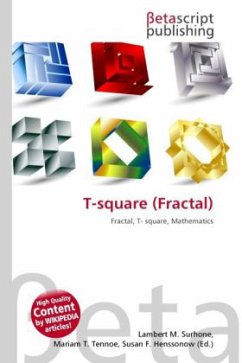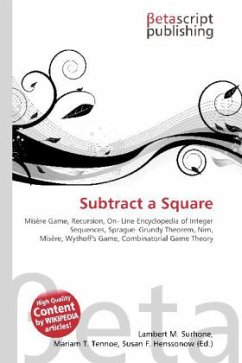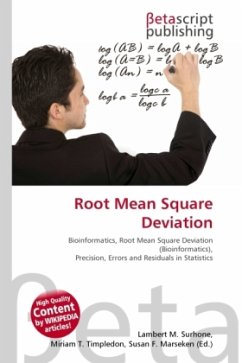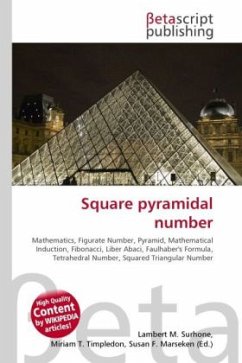
T-square (Fractal)
Versandkostenfrei!
Versandfertig in 6-10 Tagen
23,99 €
inkl. MwSt.

PAYBACK Punkte
12 °P sammeln!
High Quality Content by WIKIPEDIA articles! In mathematics, the T-square is a two-dimensional fractal. As all two-dimensional fractals, it has a boundary of infinite length bounding a finite area. Its name follows from that for a T-square. It can be generated from using this algorithm: 1. Image 1: 1. Start with a square. 2. Subtract a square half the original length and width (one-quarter the area) from the center. 2. Image 2: 1. Start with the previous image. 2. Scale down a copy to one-half the original length and width. 3. From each of the quadrants of Image 1, subtract the copy of the imag...
High Quality Content by WIKIPEDIA articles! In mathematics, the T-square is a two-dimensional fractal. As all two-dimensional fractals, it has a boundary of infinite length bounding a finite area. Its name follows from that for a T-square. It can be generated from using this algorithm: 1. Image 1: 1. Start with a square. 2. Subtract a square half the original length and width (one-quarter the area) from the center. 2. Image 2: 1. Start with the previous image. 2. Scale down a copy to one-half the original length and width. 3. From each of the quadrants of Image 1, subtract the copy of the image. 3. Images 3 6: 1. Repeat step 2. T-square has a fractal dimension of ln(4)/ln(2) = 2. The black surface extent is almost everywhere in the bigger square, for, once a point has been darkened, it remains black for every other iteration ; however some points remain white. The limit curve is a fractal line, of fractal dimension 2.












